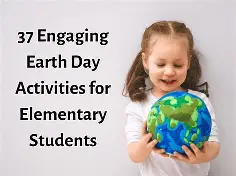
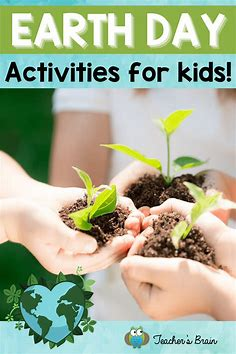
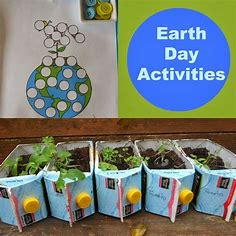
Here are some fun and engaging Earth Day activities suitable for all ages in schools:
🌍 Fun & Engaging Earth Day Activities for All Ages in Schools
1. Plant a School Garden
- Age Group: All ages (adapt activities based on grade level)
- Activity: Students can plant flowers, herbs, or vegetables in a designated garden area or pots.
- Goal: Teach about sustainability, life cycles, and healthy eating.
2. Recycled Art Projects
- Age Group: Elementary to High School
- Activity: Use recycled materials (bottles, cardboard, cans) to create art pieces or sculptures.
- Goal: Promote creativity and raise awareness about recycling and waste reduction.
3. Eco-Scavenger Hunt
- Age Group: Elementary & Middle School
- Activity: Create a list of eco-related items to find around school grounds (e.g., compost bin, native plants, litter to clean up).
- Goal: Encourage observation of nature and environmental responsibility.
4. Earth Day Pledge Wall
- Age Group: All ages
- Activity: Have students write individual pledges (e.g., “I will turn off lights when not in use”) and post them on a wall or bulletin board.
- Goal: Encourage personal commitment to sustainability.
5. Classroom Upcycling Challenge
- Age Group: Middle & High School
- Activity: Students bring used items and transform them into something useful (e.g., turning old t-shirts into tote bags).
- Goal: Teach creative problem-solving and reduce waste.
6. Green-Themed Story Time or Movie Screening
- Age Group: Elementary School
- Activity: Read books or watch short films with environmental messages (e.g., The Lorax).
- Goal: Introduce environmental concepts in an age-appropriate, engaging way.
7. “Adopt a Tree” Program
- Age Group: All ages
- Activity: Each class or student “adopts” a tree on school grounds—naming it, learning about it, and checking on its health.
- Goal: Foster a personal connection with nature.
8. Eco-Quiz or Earth Day Trivia Game
- Age Group: Middle & High School
- Activity: Host a fun quiz or trivia competition with questions on environmental facts and history.
- Goal: Reinforce learning in a fun and interactive way.
9. Trash Audit
- Age Group: Middle & High School
- Activity: Analyze the school’s waste to see what can be composted, recycled, or reduced.
- Goal: Promote critical thinking and help the school become more eco-friendly.
10. Outdoor Nature Walk & Journaling
- Age Group: All ages
- Activity: Go on a nature walk around the school or nearby park. Have students write or draw observations in a journal.
- Goal: Develop mindfulness and appreciation for the natural world.
Would you like printable versions or worksheets for any of these activities?
- Recognize and Reward Students for Their Eco-Friendly Efforts
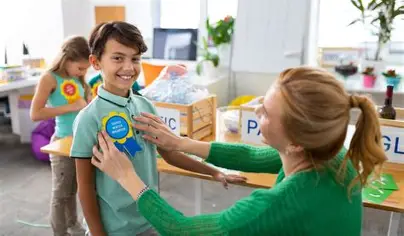
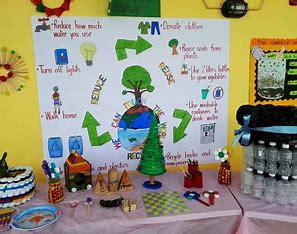
Give out certificates, eco-friendly gifts (such as reusable straws or tote bags), or special shout-outs in class to kids who regularly make sustainable decisions. Long-term eco-friendly conduct is promoted by positive reinforcement.
Teachers can encourage students to take meaningful actions outside of the classroom and to become more environmentally conscious by implementing these Earth Day activities!
2. Encourage Students to Participate in a “Go Green” Challenge
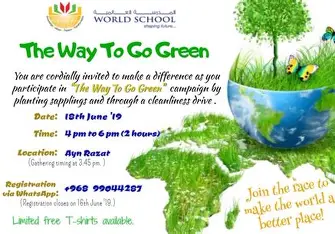

Here’s a ready-to-use message or announcement you can use to encourage students to participate in a “Go Green” Challenge:
🌱 Join the Go Green Challenge! 🌎
Hey students! Ready to make a real difference for our planet? Join the Go Green Challenge and show how small actions can lead to BIG change! Whether it’s reducing waste, saving energy, planting trees, or choosing eco-friendly habits—your efforts matter.
🎯 Challenge Ideas:
- Use reusable water bottles & lunch containers
- Recycle properly at school and home
- Walk or bike to school if possible
- Turn off lights and electronics when not in use
- Create a poster or video to raise awareness
🏆 Why Join?
- Help protect the environment
- Win prizes and get recognized
- Make your school and community greener
- Learn valuable sustainability skills
📅 Challenge runs from [Start Date] to [End Date]
💡 Get creative, go green, and inspire others. Your planet is counting on you! 🌍💚
Would you like help creating posters, social media graphics, or tracking tools for the challenge?
3. Invite a Guest Speaker to Talk About Sustainability
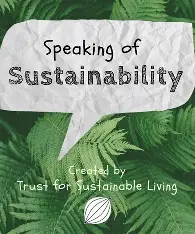
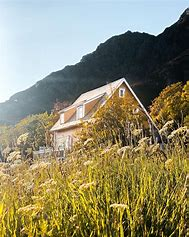
Invite a local activist, scientist, or environmental specialist to speak on conservation and sustainability initiatives. Students may be motivated to take action after hearing from someone who is actively involved in the field.
4. Create a Class Pledge to Protect the Environment
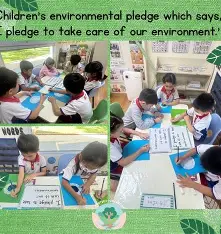
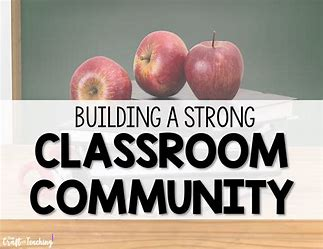
Sure! Here’s a Class Pledge to Protect the Environment—simple, meaningful, and great for group recitation or display in the classroom:
🌿 Class Pledge to Protect the Environment 🌎
We, the students of [Class/Grade Name], pledge to protect our planet.
We promise to:
🔹 Respect nature and all living things
🔹 Reduce waste by reusing and recycling
🔹 Conserve water and energy every day
🔹 Keep our surroundings clean and green
🔹 Speak up and take action to protect the Earth
Together, we will make choices that are kind to our planet.
Because a healthy Earth means a better future—for everyone.
💚 We are Earth’s protectors. We are the change. 💚
Would you like a printable version or a version with student signatures included?
5. Organize an Eco-Friendly Art Project
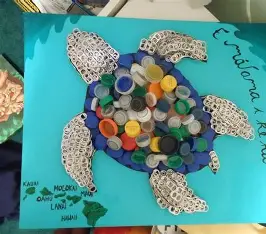
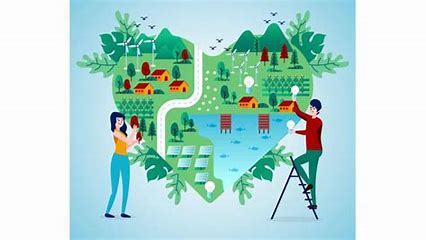
Encourage kids to use recycled items, such as cardboard, plastic bottles, or old magazines, to make artwork. Upcycling and sustainability can be promoted by showcasing the best work in the classroom or halls.
6. Assign Students to Research Local Environmental Organizations
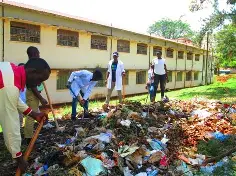
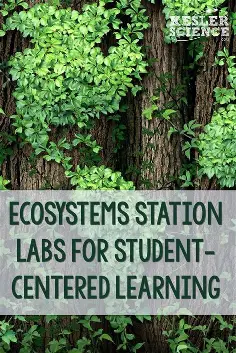
Certainly! Here’s a clear and engaging assignment prompt for researching local environmental organizations, perfect for classroom use:
📚 Assignment: Research a Local Environmental Organization 🌱
Objective:
Learn about the amazing work being done in your community to protect the environment. Discover how local organizations are making a difference—and how you can get involved!
✅ Instructions:
- Choose a Local Environmental Organization
It can be a group focused on:- Recycling or waste reduction
- Wildlife conservation
- Tree planting or community gardening
- Clean water and air initiatives
- Climate action or environmental education
- Research the Organization
Find out the following:- Name of the organization
- Location and year it was founded
- Main mission or goal
- Key projects or events they’ve done
- Ways people (especially students) can help or volunteer
- Create a Short Report or Presentation
Share what you learned! You can present it as:- A written report (1–2 pages)
- A slide presentation
- A poster with visuals and key facts
- Be Ready to Present to the Class
You’ll share your findings and help us all learn about ways we can support local environmental efforts.
📅 Due Date: [Insert Date]
🎯 Goal: Discover how you can be a part of real change in your own community!
Let me know if you’d like a printable worksheet or rubric to go with this assignment.
7. Take Students Outside for an Outdoor Classroom Experience
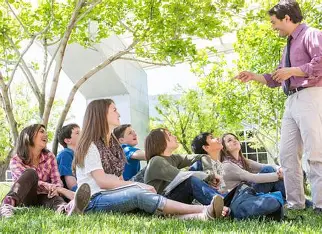
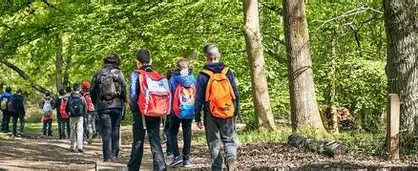
For the day, move the lesson outside! Being outside cultivates an awareness for the environment, whether it is through an ecosystem science lesson, a nature-inspired art project, or a mindfulness activity.
8. Set Up an Earth Day-Themed Writing Assignment
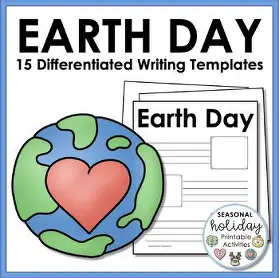
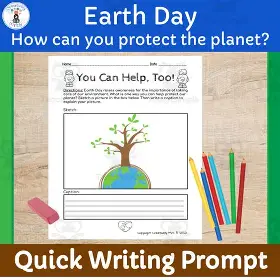
Absolutely! Here’s a complete Earth Day-themed writing assignment—perfect for encouraging creativity, reflection, and environmental awareness in students:
✏️ Earth Day Writing Assignment: “Our Planet, Our Responsibility” 🌍
Objective:
To reflect on the importance of Earth Day and express thoughts, ideas, or solutions to help protect our planet through writing.
✅ Choose One of the Following Prompts:
- “If I Were the Earth…”
Write a letter or story from the Earth’s point of view. What would the Earth say to humans? - “My Green Promise”
Describe three specific things you can do to help the environment and explain how each action makes a difference. - “A Day Without Nature”
Imagine a world without trees, animals, or clean air. Write a short story about how life would be different. - “The Future of Our Planet”
Describe what the Earth might look like 50 years from now—both in a hopeful and a harmful scenario. What can we do today to shape a better future?
📝 Requirements:
- Length: 1–2 pages (or 3–5 paragraphs)
- Include at least one fact about the environment or Earth Day
- Use descriptive language and thoughtful ideas
- Check for spelling, grammar, and punctuation
📅 Due Date: [Insert Date]
🌱 Optional Extension: Add a drawing, poem, or poster to go with your writing!
Would you like a printable template, grading rubric, or ideas for younger/older age groups too?
9. Guide Students in Creating Environmental Public Service Announcements (PSAs)
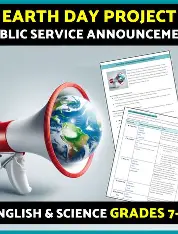
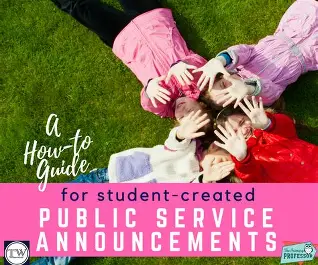
Students should be encouraged to create and record brief films, posters, or radio-style messages regarding environmental issues such as pollution, conservation, or deforestation. You can play these PSAs during school announcements or post them on social media.
10. Introduce an Earth Day Book Reading Session
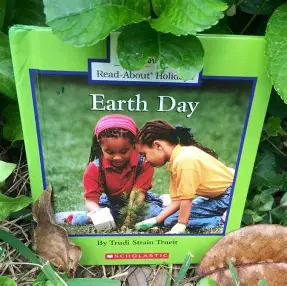
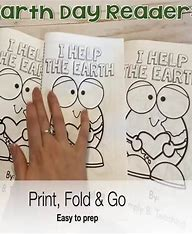
Certainly! Here’s a warm and engaging way to introduce an Earth Day Book Reading Session to students:
📖🌍 Welcome to Our Earth Day Book Reading Session! 🌿📚
Hello, everyone! Today, we’re celebrating Earth Day—a special time to learn about our amazing planet and how we can take care of it.
To honor this day, we’re going to enjoy a book reading session filled with stories and facts about nature, animals, and the environment. These books remind us why Earth is so special and how every one of us can help protect it.
📘 What to Expect:
- We’ll read a selection of Earth-themed books (fiction and nonfiction)
- We’ll talk about the lessons we learn from each story
- You’ll have a chance to share your thoughts and favorite parts
- After the reading, we might do a fun activity like drawing, writing, or discussing ways to help our planet
🌱 Why It Matters:
Books can inspire us to take action, ask questions, and see the world through new eyes. Today, let’s listen, learn, and celebrate the Earth—our shared home!
Let’s get cozy, open our minds, and dive into some great stories about our world. Happy Earth Day! 🌏💚
Would you like book suggestions for different grade levels or a printable flyer for this session?
11. Plan a “Reduce, Reuse, Recycle” Classroom Activity
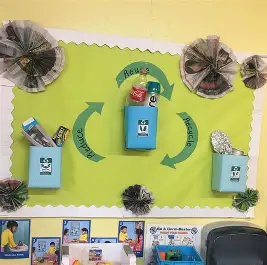
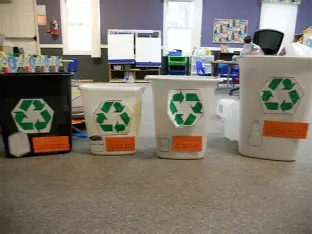
Sort objects into categories such as landfill, compost, and recycling to teach kids about responsible waste management. Talk about how even minor adjustments to daily routines can have a big impact on conservation and waste reduction.
12. Organize a Documentary Screening on Environmental Issues
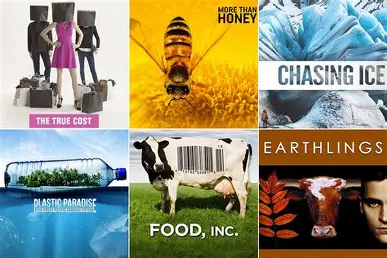
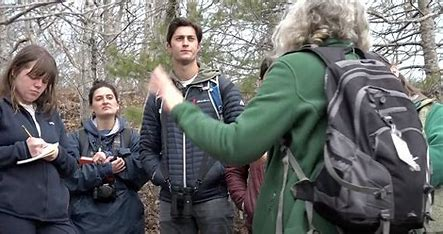
Of course! Here’s a clear and inspiring announcement or plan to organize a documentary screening on environmental issues, suitable for schools or community groups:
🎬🌎 Documentary Screening: Protecting Our Planet 🌿
Join us for a powerful and eye-opening screening of a documentary focused on environmental issues!
Let’s learn more about the challenges our Earth is facing—and what we can do to make a difference.
📅 Event Details:
🎥 Title of Documentary: [Insert Title]
🗓 Date: [Insert Date]
⏰ Time: [Insert Time]
📍 Location: [Insert Room/Hall Name]
🎯 Audience: [Grade Level/Class/Community]
🌱 Why Attend?
- Understand the real-world impact of climate change, pollution, deforestation, and more
- Learn about inspiring individuals and organizations taking action
- Get inspired to create your own eco-friendly solutions
- Take part in a short discussion or Q&A session afterward
💬 After the Screening:
We’ll gather for a brief reflection session to:
- Share our thoughts and reactions
- Discuss how we can help as individuals and as a class/community
- Brainstorm ideas for future projects or campaigns
Bring an open mind, your curiosity, and a passion for protecting our planet. Let’s learn together and make a difference—one step at a time.
🌍 Together, we can be part of the solution. 🌿
Would you like help selecting an age-appropriate documentary or creating permission slips and reflection sheets?
13.Encourage Students to Brainstorm Eco-Friendly Ideas
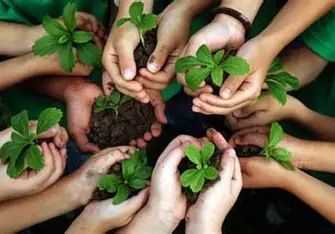
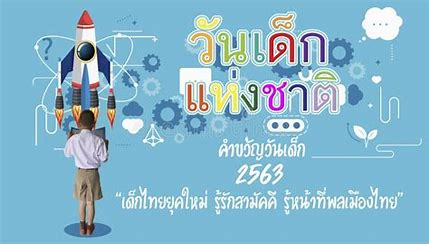
Encourage children to think of creative methods to support sustainability at home and at school, cut down on trash, or save energy. Make it an enjoyable challenge in which students present their best ideas and select the ones that are most likely to be implemented.
14. Lead a Discussion on Climate Change and Sustainability
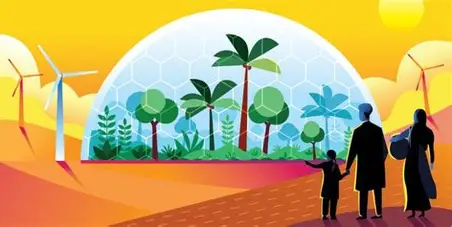
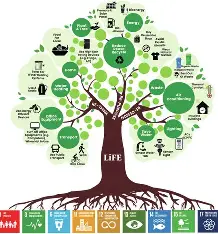
Absolutely! Here’s a structured and engaging outline to help you lead a discussion on climate change and sustainability with students:
🗣️ Classroom Discussion: Climate Change & Sustainability 🌍
Objective:
To help students understand the causes and effects of climate change, explore sustainability, and discuss practical actions we can take to protect our planet.
🔹 Start with a Warm-Up Question:
Ask students:
“What do you think climate change means?”
Give them a chance to share ideas before providing a simple definition:
Climate change is a long-term shift in temperatures and weather patterns, mainly caused by human activities like burning fossil fuels.
🔹 Key Topics to Discuss:
- What Causes Climate Change?
- Greenhouse gases (CO₂, methane, etc.)
- Deforestation
- Pollution from factories, cars, and more
- Effects of Climate Change:
- Rising global temperatures
- Melting ice caps and rising sea levels
- More extreme weather (floods, droughts, wildfires)
- Impact on animals, plants, and people
- What is Sustainability?
- Meeting our needs without harming the environment or future generations
- Using resources wisely (like water, energy, and food)
- Examples: recycling, renewable energy, reducing waste
🔹 Discussion Questions for Students:
- How does climate change affect us locally and globally?
- What are some things we do every day that impact the environment?
- What can we do to live more sustainably at home or school?
- Do you think young people can make a difference? Why or why not?
🔹 Wrap-Up Activity:
Ask students to share one personal “Green Goal”—something they can start doing to help the environment, like turning off lights, using less plastic, or starting a garden.
Optional Extension:
Show a short video or infographic before the discussion to help introduce the topic visually.
Let me know if you’d like printable handouts, slides, or age-specific adaptations!
15. Start a Sustainability Club in School
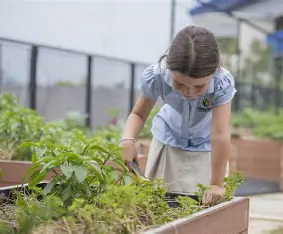

Ongoing projects like recycling campaigns, composting initiatives, or energy saving campaigns might be planned by a sustainability club. In order to guarantee enduring environmental consciousness in the school, members might also organise upcoming Earth Day activities.
16. Write Letters to Local Officials Advocating for Environmental Changes

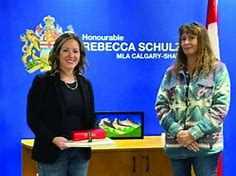
Certainly! Here’s a ready-to-use classroom activity for writing letters to local officials to advocate for environmental changes, along with a sample letter template in English:
✉️ Activity: Write a Letter to a Local Official About the Environment 🌍
Objective:
Students will use their voices to advocate for positive environmental change by writing respectful, persuasive letters to local leaders (mayors, city council members, school board officials, etc.).
🟩 Instructions for Students:
- Choose an Issue You Care About
Examples:- Reducing plastic waste in schools
- Starting a recycling or composting program
- Protecting green spaces or planting trees
- Promoting clean energy or public transportation
- Research the Topic
- Why is this issue important?
- How is your community affected?
- What actions can your local government take?
- Write a Thoughtful Letter
- Be polite, clear, and passionate
- Include facts, personal reasons, and possible solutions
- Keep the letter about 3–5 paragraphs
📝 Sample Letter Template:
[Your Name]
[Your Grade/Class]
[School Name]
[Date][Official’s Name]
[Official’s Title]
[City or Local Office Name]Dear [Official’s Name],
My name is [Your Name], and I am a student at [School Name]. I am writing to you because I care deeply about our environment and I believe there are ways we can improve our community.
One issue I’m especially concerned about is [briefly state the issue, e.g., the lack of recycling options in public areas]. This matters because [explain why it’s important—mention health, pollution, animals, or future generations].
I believe we can help solve this problem by [suggest a possible solution or idea]. Other communities have done similar things, and it has made a big difference.
Thank you for taking the time to read my letter. I hope you will consider helping our community take steps to protect our environment. I would be proud to know that our leaders care about the Earth as much as we do.
Sincerely,
[Your Name]
Would you like this formatted as a printable worksheet or shared as part of a class writing activity? I can also help you find the contact information for your local officials.
17. Take Part in a Tree-Planting Initiative
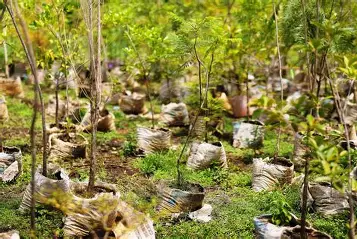
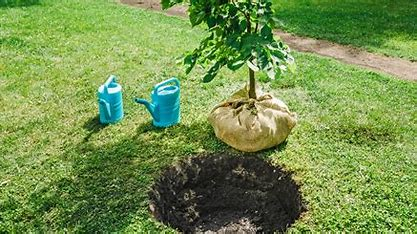
Plant trees in parks, schoolyards, and other public spaces by collaborating with neighbourhood environmental organisations or city initiatives. If planting trees isn’t an option, students can donate to NGOs that plant trees and learn about deforestation.
18. Design an Awareness Campaign for Earth Day


Absolutely! Here’s a complete guide to help you design an engaging and impactful Earth Day Awareness Campaign — perfect for schools, clubs, or youth groups:
🌎 Earth Day Awareness Campaign: “One Earth. Our Responsibility.” 🌱
Goal:
To educate and inspire students and the community to take action for the environment through fun, informative, and creative activities leading up to and on Earth Day (April 22nd).
📅 Campaign Duration:
1–2 weeks (e.g., April 15–22)
📢 Key Campaign Components:
1. Theme & Logo
- Choose a theme like:
“One Earth. Our Responsibility.”
“Act Green. Think Clean.”
“Small Steps, Big Impact.” - Create a campaign logo or poster and display it around the school
2. Daily Green Facts
- Share a new eco-fact or tip each day during morning announcements or school newsletter Example: “Did you know? Recycling one aluminum can saves enough energy to power a TV for 3 hours!”
3. Posters & Visuals
- Students can design posters on topics like:
- Climate change
- Reducing plastic
- Water and energy conservation
- Endangered species
4. Lunchtime or Hallway Booths
- Set up awareness booths or info tables:
- Display eco-friendly products
- Host a quiz or trivia game
- Give out “Green Pledge” cards
5. Green Dress-Up Day
- Have a special day where everyone wears green or clothes made from reused materials
6. Social Media or School Website Campaign
- Share daily eco-tips, art, photos, and facts
- Create a campaign hashtag like #EarthDayAt[SchoolName]
7. Classroom Involvement
- Each class can adopt an eco-theme (e.g., water, trees, recycling) and create a short presentation or visual display
8. Final Event or Assembly on Earth Day
- Celebrate with:
- Student presentations or skits
- A tree planting or school clean-up
- Awards or certificates for outstanding participation
✅ Outcomes:
- Raise awareness about key environmental issues
- Empower students to take eco-friendly actions
- Build community around a shared cause
Would you like a printable planning sheet or editable slides/poster templates for this campaign? I can help with that too!
19. Research and Present on Endangered Species
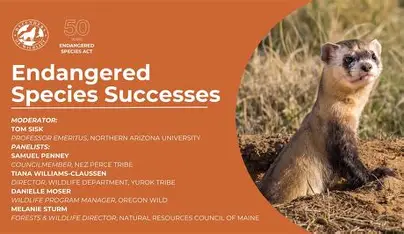

Give pupils the task of researching various endangered species, emphasising their habitat, risks, and conservation initiatives. To communicate their research with their peers, they can make infographics, posters, or digital presentations. Emphasising practical concerns enhances the significance of Earth Day.
20. Build a Vertical Garden in the School
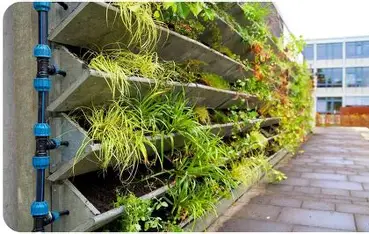
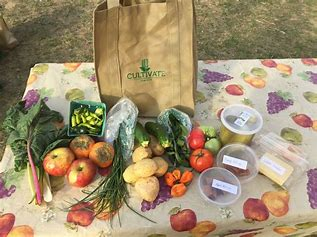
Great idea! Building a vertical garden at school is a fun, hands-on project that teaches students about sustainability, plant care, and creative problem-solving. Here’s a complete guide to help plan and launch this eco-friendly project:
🌿 Project: Build a Vertical Garden at School 🌿
Project Name Idea: “Growing Up Green”
🎯 Project Goals:
- Beautify the school environment
- Encourage sustainable gardening in small spaces
- Teach students about plant growth, food systems, and eco-responsibility
- Provide fresh herbs, vegetables, or flowers for school use
📌 Steps to Plan and Build a Vertical Garden:
1. Choose a Location
- Find a wall, fence, or sunny outdoor space
- Make sure the area gets enough light and is easy to access for watering
2. Decide What to Grow
- Easy plants for beginners include:
- Herbs: basil, mint, parsley
- Vegetables: lettuce, spinach, cherry tomatoes
- Flowers: marigolds, petunias, nasturtiums
- Air-purifying plants if indoors (like spider plants or pothos)
3. Select a Vertical Garden Style
Options include:
- Hanging plastic bottles or pots
- Wall-mounted pallets with planting pockets
- Gutter gardens (recycled rain gutters attached to a wall)
- Recycled wooden crates or shoe organizers
4. Gather Materials
- Recycled containers or pots
- Soil, compost, and seeds or seedlings
- Mounting materials (hooks, screws, ties)
- Watering cans or drip irrigation if possible
- Gloves and small gardening tools
5. Involve Students
- Assign roles: designers, builders, planters, caretakers
- Discuss topics like plant life cycles, composting, and the benefits of greenery
- Encourage students to decorate the garden or label the plants
6. Build & Plant
- Assemble the structure safely with adult supervision
- Fill with soil and carefully plant
- Water gently and keep track of growth with a class journal
7. Create a Care Plan
- Rotate weekly “Garden Helpers” to water and check on plants
- Set up a maintenance plan for weekends and school breaks
🪴 Bonus Ideas:
- Add signs with plant names and facts
- Start a compost bin nearby
- Track harvests or blooms in a shared class chart
- Take before-and-after photos to share on Earth Day or the school newsletter
🌱 Learning Benefits:
- Hands-on science and environmental education
- Teamwork, responsibility, and creativity
- Real-world application of sustainability principles
Would you like a printable planning sheet, step-by-step instructions, or poster templates to promote the garden around school? I’d be happy to help!